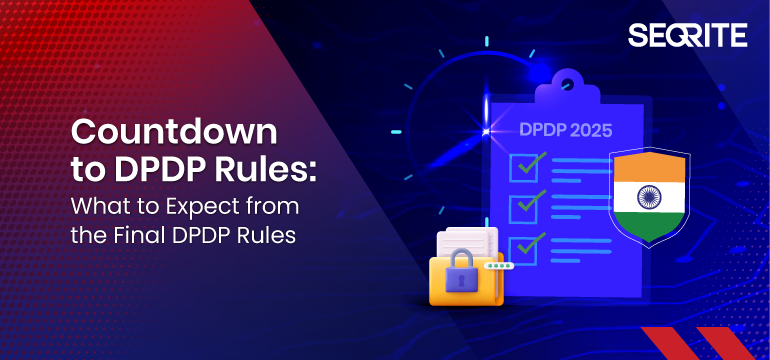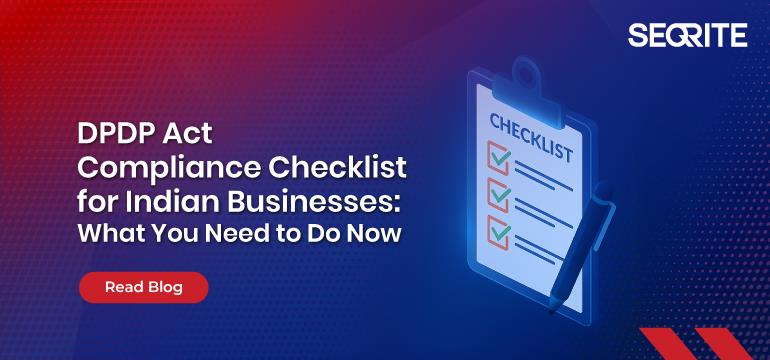The wait is almost over. The final Digital Personal Data Protection (DPDP) Rules are just days away, marking the next big step after the enactment of the DPDPA in 2023. With only a few days left, organizations must gear up to align with new obligations on data protection, governance, and accountability.
Are you prepared to meet the requirements and avoid costly penalties? These rules will act as the operational backbone of the law, providing clarity on implementation, enforcement, and compliance.
With businesses, regulators, and citizens alike watching closely, the release of these rules will reshape India’s digital economy and data protection landscape. Here’s what to expect as the countdown begins.
Why the DPDP Rules Matter
While the DPDPA, 2023 laid down the broad principles of personal data protection—such as consent, purpose limitation, and user rights—the rules will answer the “how” questions:
- How should organizations obtain and manage consent?
- How will data principals exercise their rights?
- What will compliance look like for startups vs. large enterprises?
- How will penalties be calculated and enforced?
In short, the rules will turn principles into practice.
Key Areas to Watch in the Final Rules
- Consent & Notice Requirements
Expect detailed procedures for how organisations must obtain consent, including the form, language, and accessibility of consent notices. The government may also clarify rules around “deemed consent”, which has raised debate among privacy experts.
- Data Principal Rights
The rules will operationalise rights like data access, correction, erasure, and grievance redressal. Clear timelines for fulfilling these requests will likely be specified, adding compliance pressure on businesses.
- Obligations for Data Fiduciaries
Significant data fiduciaries (LDFs) will have enhanced responsibilities—such as mandatory Data Protection Officers (DPOs), regular audits, and risk assessments. The criteria for what qualifies as an LDF will be closely watched.
- Cross-Border Data Transfer
The government may publish its “whitelist” of countries where Indian personal data can be transferred. This will be crucial for IT/ITES, cloud, and fintech industries that rely heavily on global operations.
- Children’s Data Protection
Rules around parental consent, restrictions on profiling, and targeted advertising for children may tighten, impacting edtech, gaming, and social platforms.
- Enforcement & Penalties
The rules are expected to detail the functioning of the Data Protection Board of India (DPBI), including hearings, fines, and appeals procedures. This will define how strictly the law is enforced.
- Transition & Implementation Timelines
Perhaps most critical will be the phased rollout plan. Businesses anxiously await to know how much time they will get to comply, and whether specific provisions will be delayed for startups and SMEs.
What Businesses Should Do Now
Even before the DPDP rules are published, organizations should start preparing:
- Map personal data flows across systems and vendors.
- Review consent management practices and plan for user-friendly updates.
- Establish governance frameworks—DPO roles, audit readiness, and escalation processes.
- Evaluate cross-border dependencies to anticipate transfer restrictions.
- Train employees in privacy responsibilities and incident handling.
Early movers will reduce compliance risks and gain customer trust in an era when data is a competitive differentiator.
The Bigger Picture
The DPDP Rules will set the tone for India’s privacy-first digital future. For businesses, this is more than just a compliance exercise—it’s a chance to demonstrate accountability, build trust, and strengthen their brand in a data-conscious marketplace.
As the countdown begins, one thing is clear: organisations that prepare proactively will be better positioned to adapt, comply, and thrive in the new regulatory environment.
Stay ahead of DPDP compliance with Seqrite. Prepare your organization now with Seqrite’s end-to-end data privacy and compliance solutions.


